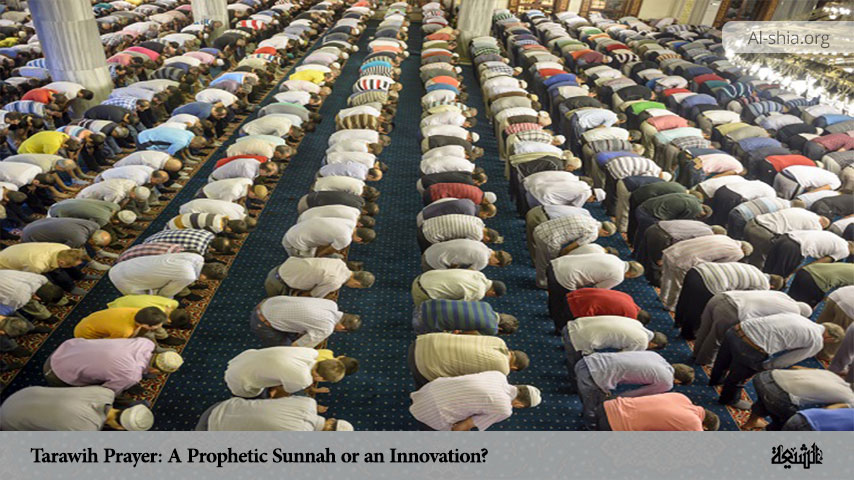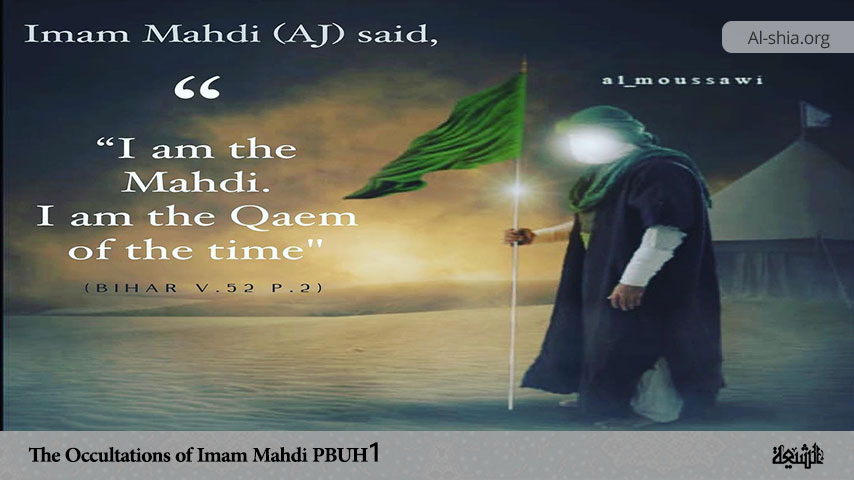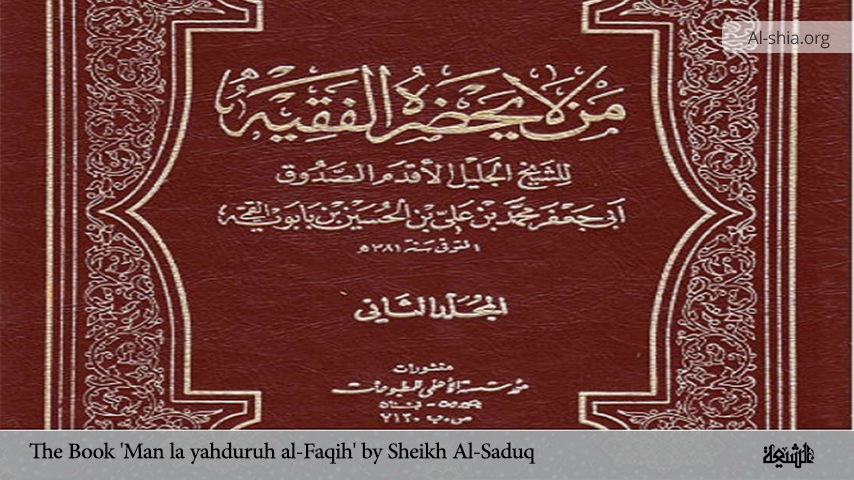tarawih as per Ahlu as-Sunnah (Sunni)’s belief and practice simply refer to supererogatory prayer (Nawafil) prayed at night (immediately or some minutes) after salat al-Ishai during the holy month of Ramadan. Ever since its inception, it has become a common practice in the Sunni world.
Just like every other issue among scholars, Tarawih also attracted heated debate and various views as per its validity. The majority’s view in the Sunni world is that it is a part of the Sunnah of the Prophet. Indeed, this claim is what makes it highly controversial.
Genesis of Tarawih
Naturally, the Prophet (PBUHH) used to observe Qiyām al-Layl (late-night prayer) after being made obligatory for him by his Lord[1]. While this special prayer was only enjoined and made obligatory upon the Prophet, it is optional for his Ummah (followers, community). This was the reason why the Prophet used to pray alone in the middle of the night.
During the holy month of Ramadan, the Prophet continued this routine act of praying the obligatory Qiyām al-Layl. Alas, an incident occurred whereby a certain number of his companions found him praying and stood behind him to pray.
Imam Bukhari shed light on this in his document: Narrated ‘Urwa: “That he was informed by `Aisha, “Allah’s Messenger (s) went out in the middle of the night and prayed in the mosque and some men prayed behind him. In the morning, the people spoke about it and then a large number of them gathered and prayed behind him (on the second night). In the next morning, the people again talked about it and on the third night, the mosque was full with a large number of people. Allah’s Messenger (s) came out and the people prayed behind him. On the fourth night, the Mosque was overwhelmed with people and could not accommodate them, but the Prophet (s) came out (only) for the Morning Prayer. When the Morning Prayer was finished, he recited Tashah-hud and (addressing the people) said, “Amma ba’du, your presence was not hidden from me but I was afraid lest the night prayer (Qiyām) should be enjoined on you and you might not be able to carry it on.” So, Allah’s Apostle died and the situation remained like that (i.e. people prayed individually)[2]“
It is crystal clear from this hadith that, the Prophet did not call for this prayer to be established; rather, the companions formed congregations behind him without his verbal permit. However, when he realized their intentions about it, he cautioned them that it should not be in a congregation – fearing a recommended prayer might turn obligatory for them, which could be difficult perhaps due to its timing (middle of the night).
The Sunni’s Understanding of the Hadith
Ahlu as-Sunnah’s understanding of this hadith is that the Prophet did not forbid the “Qiyām al-Layl” prayer from being established in congregations permanently. Rather, they understood the forbiddance to mean “during that period” where people’s understanding of the practice of Islam had not been perfected. Therefore, about a decade after the demise of the Prophet, the second Caliph, Umar ibn al-Khattab “re-established” “this Sunnah”.
Again, Imam Bukhari documents that Abdur Rahman ibn Abdul-Qari said: “I went out in the company of Umar ibn Al-Khattab one night in Ramadan to the mosque and found the people praying in different groups. A man praying alone or a man praying with a little group behind him. Therefore, Umar said, in my opinion, I would better collect these (people) under the leadership of one reciter (i.e. let them pray in congregation!). Therefore, he made up his mind to congregate them behind Ubay ibn Ka’b. Then on another night, I went again in his company and the people were praying behind their reciter. On that, Umar remarked, “What an excellent BID’A” (i.e. an innovation in religion). This is; but the prayer, which they do not perform, but sleep at its time is better than the one they are offering. He meant the prayer in the last part of the night. (In those days) people used to pray in the early part of the night[3].”
This act of the second Caliph Umar ibn al-Khattab was preserved to date and it is what gave the Sunni inspiration to continuously establish “Qiyām al-Layl” in congregations.
A Misunderstood and Misinterpreted Practice
This understanding of the Ahlu as-Sunnah is obviously incorrect for the following reasons:
I) Specific Instruction of the Prophet
If the first hadith where the Prophet is reported to have said, “but I was afraid lest the night prayer (Qiyām) should be enjoined on you and you might not be able to carry it on” seems to open the permissibility door of establishing Qiyām al-Layl in congregations, then, the Prophet made himself crystal clear in another hadith where he is reported to have said as documented by al-Bukhari: Narrated Zayd ibn Thabit: “Allah’s Messenger (peace be upon him) made a small room (with a palm leaf mat). Allah’s Messenger (peace be upon him) came out (of his house) and prayed in it. Some men came and joined him in his prayer. Then again the next night they came for the prayer, but Allah’s Messenger (peace be upon him) delayed and did not come out to them. So, they raised their voices and knocked on the door with small stones (to draw his attention). He came out to them in a state of anger, saying, “You are still insisting (on your deed, i.e. Tarawih prayer in the mosque) that I thought that this prayer (Tarawih) might become obligatory on you. So, you people, offer this prayer at your homes, for the best prayer of a person is the one which he offers at home, except the compulsory (congregational) prayers[4].”
Here, the Prophet further affirm to the companions that, this “Qiyām al-Layl” is a recommended prayer and should therefore not be offered in congregations. And he went further saying that recommended prayers (Nawafil) attract the best reward when offered individually at home; not in congregations in the mosque. Only obligatory prayers attract the best reward when offered in congregations.
II) The Clarification of Caliph Umar ibn al-Khattab
Even if we still drag the above statement of the Prophet among ourselves, the second Caliph Umar ibn al-Khattab gives no room for the Ahlu as-Sunnah to defend his action (by labelling it as Sunnah of the Prophet). Again, he says after establishing the “Qiyām al-Layl” in congregations: “What an excellent BID’A (i.e. an innovation in religion). This is, but the prayer which they do not perform, but sleep at its time is better than the one they are offering.”
The reporter further interpreted the saying of the Caliph to bury any misinterpretation. The reporter says, “He meant the prayer in the last part of the night. (In those days) people used to pray in the early part of the night.”
It should be observed that the Caliph never called this action of his “Sunnah of the Prophet”; rather he called it “Bid’ah (an innovation in religion). To further emphasise it is Bid’ah, he highlighted that the Sunnah of the Prophet (where you observe the Qiyām al-Layl in the middle of the night after waking up from sleep) is far better than what he invented (where under his instructions people observed the prayer in congregations before it’s specified time).
III) Tarawih or Qiyām al-Layl?
Ahlu as-Sunnah observed the Tarawih prayer during the holy month of Ramadan immediately or a few minutes after the Ishai prayer claiming it to be Qiyām al-Layl (Late-night prayer) that one wakes up to observe in the middle of the night as we have seen in the report of the mother of the faithful, Aisha when she reported that “Allah’s Messenger (s) went out in the middle of the night and prayed in the mosque.”
This practice of Ahlu as-Sunnah (praying immediately or some minutes after Ishai prayer) is what was inherited from the Bid’ah of the second Caliph, Umar ibn al-Khattab who established the practice. In addition, this is the reason the latter emphasises that “the prayer which they do not perform, but sleep at its time is better than the one they are offering.” That is, the Qiyām al-Layl prayer, which one wakes up to pray, is better than the Bid’ah of praying it after the Ishai prayer. In short, there is no way to put Ahlu as-Sunnah’s Tarawih in the Sunnah of the Prophet’s Qiyām al-Layl.
IV) How the Prophet Prayed the Qiyām al-Layl of Ramadan?
Interestingly, contrary to the aforementioned hadiths, there are few other Ahlu as-Sunnah’s hadith, which suggested that the Prophet did lead Qiyām al-Layl in a congregation on another occasion but with few conditions. Ahlu as-Sunnah observe their Tarawih for 29 or 30 nights (immediately or some minutes after salat al-Ishai) in congregations contrary to what the report said on how the Prophet observed it.
Imam Ibn Khuzaymah documents: Narrated Nu’aym ibn. Ziyād Abū Ṭalḥah al-Anmārī: I heard al-Nu’mān ibn Bashīr saying on the pulpit of Ḥimṣ: “We prayed Qiyām al-Layl with the Messenger of Allāh, peace be upon him, in the month of Ramaḍān, on the 23rd night till one-third of the night. Then, we prayed Qiyām al-Layl with him on the 25th night until midnight. Then, we prayed Qiyām al-Layl with him on the 27th night until we thought that we would miss al-falāḥ; and we used to call it the suḥūr (i.e. early morning meal in Ramadan)[5]. Shaykh al-A’ẓamī says: Its chain is Hasan.
Ibn Khuzaymah also mentioned another narration narrated by Jubayr ibn Nufayr al-Ḥaḍramī, from Abū Dharr and its chain is considered Ṣaḥīḥ by Shaykh al-A’ẓamī[6].
From these narrations, the Prophet only led the companions in Qiyām al-Layl on the 23rd, 25th and 27th nights of Ramaḍān. He did not lead them on any other night. Imam Ibn Khuzaymah himself mentions this point when he says: “The Prophet, peace be upon him, limited praying Qiyām al-Layl with the people to only these three nights because of the presence of Laylat al-Qadr among them.”
Moreover, we understand from the second ḥadīth above that, the phrase “Whosoever does Qiyām al Layl with the Imām until he finishes, the qiyām of a whole night will be written for him” – which Salafīs often quote to justify Tarawih – relates only to those three nights and nothing else.
With these facts in mind, please pay close attention to these words of Salafi Shaykh al-‘Uthaymīn: “Therefore, brothers: No act of ‘ibādah is accepted except with the fulfilment of two fundamental conditions: one of them is sincerity to Allāh, and the other is imitation of the Messenger of Allāh, peace be upon him. We already mentioned the proofs for that. We also say: verily, the imitation (of the Prophet) cannot be achieved except if it complies with the Divine Law in six matters, and they are: the reason, the type, the amount, the method, the period, and the place.[7]” Another Salafī scholar, Shaykh Dr. Muḥammad ibn Sa’īd Raslān al-Makkī, in his fatwā reiterates these six criteria also[8].
Conclusion
It is crystal clear the Prophet never observed Qiyām al-Layl or Tarawih immediately or some minutes after salat al-Ishai. Likewise, he never offered it in congregations for 29 or 30 nights of Ramadan. Rather he constantly offered his supererogatory prayer (Qiyām al-Layl) individually in the middle of the night except for the 23rd, 25th and 27th nights, which he offered in congregations. This is what is proven in line with the traditions of Ahlu as-Sunnah. Therefore, it is either the Ahlu as-Sunnah follows this practice of the Prophet or continues with the Bid’at (innovation in religion) established by the Caliph Umar ibn al-khattab. Obviously the latter cannot be smuggled into the first.
By: Sheikh Abdulwasi Olawale Agboola
References:
[1] . Cf. Qur’an 17 (Surah al-Isra): 79; Qur’an 73 (Sura al-Muzammil): 1-4.
[2] . Sahih al-Bukhari 2012. In-book reference: Book 31, Hadith 5. USC-MSA web (English) reference: Vol. 3, Book 32, Hadith 229 (https://www.sunnah.com/bukhari/31/5)
[3] . Sahih al-Bukhari 2010. In-book reference: Book 31, Hadith 3. USC-MSA web (English) reference: Vol. 3, Book 32, Hadith 227. https://www.sunnah.com/bukhari/31/3
[4] . Sahih al-Bukhari 6113. In-book reference: Book 78, Hadith 140. USC-MSA web (English) reference: Vol. 8, Book 73, Hadith 134. https://www.sunnah.com/bukhari/78/140
[5]. Sahih Ibn Khuzaymah [maktab al-islami, Beirut, 1390 H/1970], vol. 3, p. 337, hadith 2204 http://islamport.com/d/1/mtn/1/73/2692.html
[6]. Sahih Ibn Khuzaymah [maktab al-islami, Beirut, 1390 H/1970], vol. 3, p. 337, hadith 2206. http://islamport.com/d/1/mtn/1/73/2692.html
[7] . Majmū’ Fatāwā wa Rasāil, vol. 7, p. 337. http://shamela.ws/browse.php/book-12293/page-2125

















